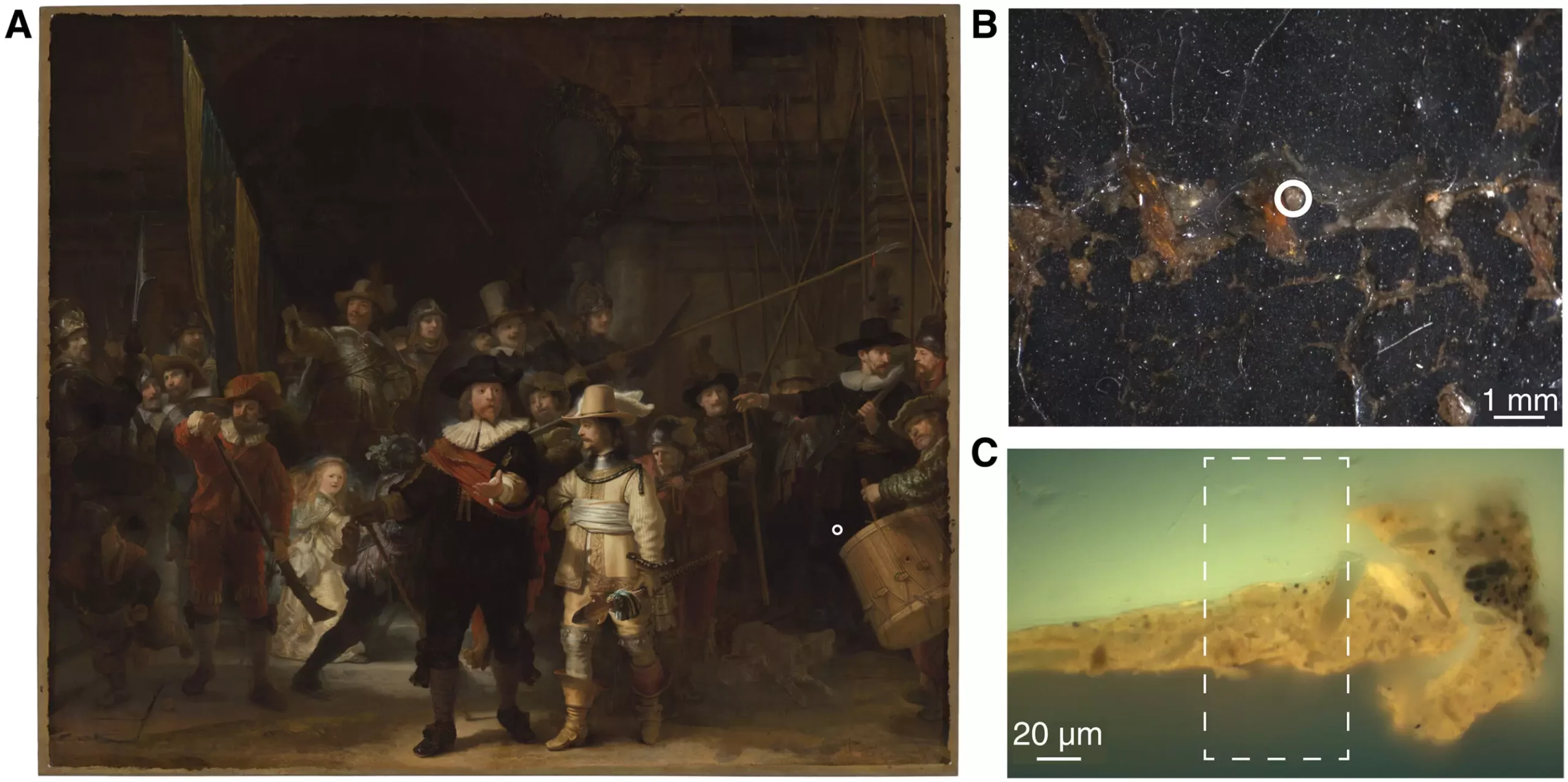New research has brought to light another fascinating aspect of Rembrandt’s artistic genius. According to a recently published study in Science Advances, it has been discovered that the Dutch master utilized a lead-based substance to impregnate the canvas of his renowned 1642 militia painting, “The Night Watch.” This groundbreaking revelation challenges the conventional understanding of Rembrandt’s techniques and highlights his willingness to experiment with new methods. The discovery, which emerged from the extensive research and conservation project known as Operation Night Watch, provides invaluable insights into the artistic processes of one of history’s greatest painters.
Led by Frédérique Broers, a researcher at the Rijksmuseum and Ph.D. student in collaboration with professors Katrien Keune, Koen Janssens, and Florian Meirer, the study employed advanced analysis techniques to examine a paint sample taken from “The Night Watch.” Using a combination of X-ray fluorescence and ptychography, the team identified and visualized minuscule chemical compounds within the lower layers of the canvas. To their astonishment, they discovered a lead-rich layer underneath the quartz-clay ground layer, a method never before seen in Rembrandt’s work or that of his contemporaries.
Rembrandt’s unconventional impregnation technique challenges existing knowledge about his artistic practices. Previous studies had indicated that Rembrandt typically employed a double ground method, involving a first layer containing red earth pigments followed by a second layer consisting of lead white. However, the large scale of “The Night Watch” necessitated an alternative approach. The canvas, intended to be displayed on the damp outer wall of the great hall of the musketeers’ shooting range in Amsterdam, required a lighter, more flexible ground layer. To solve this problem, Rembrandt turned to a suggestion found in Théodore de Mayerne’s contemporary source on painting techniques, which proposed impregnating the canvas with lead-rich oil as a viable alternative. Rembrandt’s decision to adopt this unconventional impregnation procedure was a testament to his ingenuity and desire to ensure the longevity of his masterpiece.
The remarkable presence of the lead-containing layer was uncovered through the use of state-of-the-art imaging techniques. By utilizing X-ray fluorescence and ptychographic nano-tomography at the DESY synchrotron radiation source, the researchers were able to visualize the even distribution of lead within the ground layer of the canvas. The X-ray fluorescence method allowed for the investigation of the distribution of heavier elements, while ptychography, a computational imaging technique, enabled the visualization of even the lightest elements and organic fractions. Upon analyzing a microsample taken from “The Night Watch,” the researchers were perplexed by the discovery of a homogenous layer of dispersed lead within the ground layer. This finding contradicted expectations, as lead components were not anticipated in the quartz-clay ground layer.
The research team combined the results obtained from the microsample analysis with a lead distribution map of the entire painting, which was generated through X-ray fluorescence scanning in the Rijksmuseum’s Gallery of Honour. The lead distribution map revealed the widespread presence of lead throughout the painting, supporting the hypothesis that Rembrandt employed an impregnation procedure characterized by large semi-circular brushstrokes. These findings reaffirm the notion that Rembrandt was a true innovator, unafraid to challenge traditional techniques and explore new methods to achieve his artistic vision.
The revelations brought forth by this groundbreaking research shed light not only on Rembrandt’s technical brilliance but also on the intriguing history of “The Night Watch.” From the imprint of the original strainer onto which the canvas was stretched to the lead-based impregnation, every aspect of the painting tells a story of Rembrandt’s unwavering dedication to his craft. As we delve deeper into understanding the complexities of Rembrandt’s artistic process, we grow to appreciate the magnitude of his genius and the invaluable contributions he made to the art world.


Leave a Reply